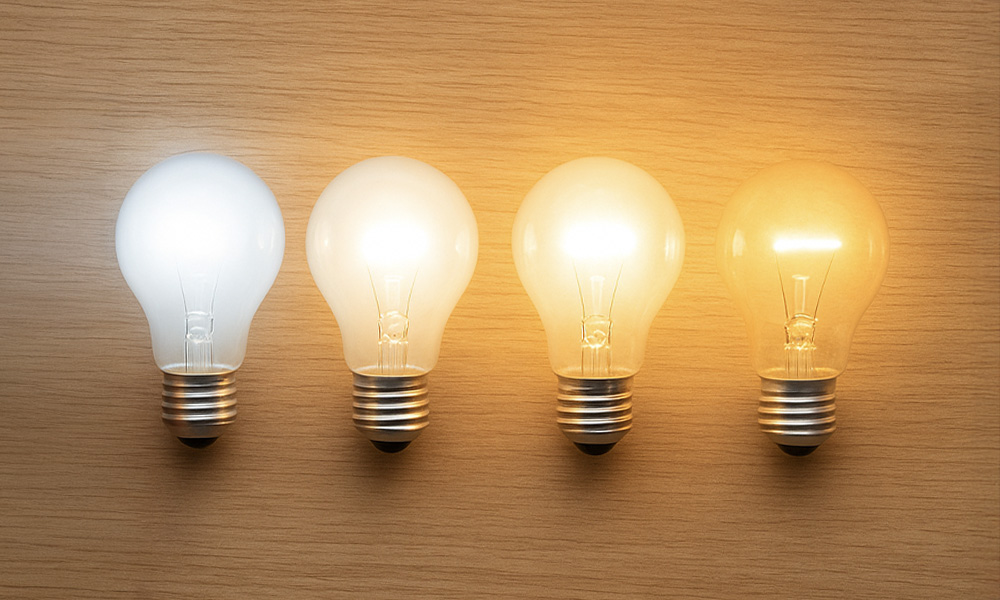Color temperature is a key factor in lighting design. It influences mood, productivity, and visual comfort which makes it one of the most important factors in choosing the right light for your space.
We often receive questions about how color temperature affects homes, businesses and the people using them. Below are the top five questions about color temperature, with clear explanations to help you understand and optimize your lighting choices.
What Is Color Temperature and How Is It Measured?
Color temperature describes the hue of a light source and is measured in degrees Kelvin (K). It ranges from warm tones (lower Kelvin values, around 2700K) to cool tones (higher Kelvin values, up to 6500K and beyond). Warm light appears yellowish or amber, similar to candlelight or traditional incandescent bulbs, while cool light looks a bit bluish, resembling daylight on a clear sky day. Naturaled products cover a broad spectrum of color temperatures to suit different environments and preferences.
How Does Color Temperature Affect Human Mood and Productivity?
Warm color temperatures (2700K–3000K) create a cozy, relaxing atmosphere, ideal for homes, restaurants, and lounges. Cooler temperatures (4000K–6500K) promote alertness and concentration, making them suitable for offices, schools, and hospitals. In addition to fixed color temperature products, Naturaled also offers various LED fixtures and lamps that allow users to adjust color temperature through a switch on the device.
Can I Mix Different Color Temperatures in One Space?
While it is not usually recommended to mix different color temperatures in the same space, combining color temperatures is possible. However, it requires thoughtful design to avoid visual discomfort or color clashes. Combining warm and cool lights can create dynamic and layered lighting effects, but it’s important to maintain harmony. Be sure that the blending of color temperatures ensures balanced illumination that supports both aesthetics and functionality of the space.
What Color Temperature Is Best for Specific Applications?
Application | Recommended Color Temperature (K) | Purpose |
Residential Living | 2700K–3000K | Warm, relaxing ambiance |
Workspaces/Offices | 4000K–5000K | Enhances focus and clarity |
Retail Stores | 3000K–4000K | Highlights products naturally |
Healthcare | 4000K–6500K | Supports alertness and hygiene |
Outdoor Lighting | 3000K–5000K | Safety and visibility |
Naturaled’s product range supports these varied needs with precision-engineered LEDs tailored to each environment.
How Does Color Temperature Impact Our Body Clock?
Color temperature can have a significant impact on our body clock. Numerous scientific studies have shown that light color temperature has a dramatic impact on our melatonin production and circadian rhythm regulation. Blue-rich, cool-toned light, above 5000K, promotes alertness by suppressing melatonin, making it ideal for the daytime but disruptive at night. Warmer, red-toned light, 2700K-3500K, has less impact on the circadian system and can signal relaxation, making it suitable for evening hours to support sleep.
Understanding the questions we have addressed above can help you make informed decisions that will result in the best possible environment that enhances comfort, productivity, and appearance. Naturaled’s expertise in color temperature technology ensures that you can tailor your environment to your exact needs with energy-efficient, high-quality lighting solutions.



